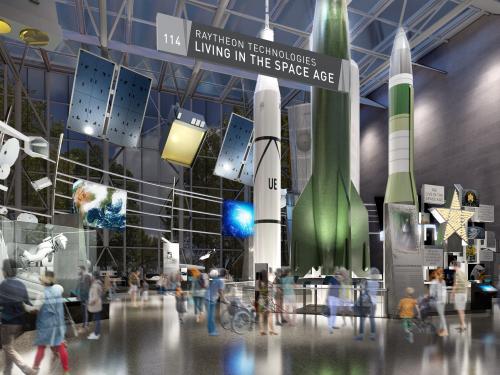
Stories of daring, stories of technological feats, stories of prevailing against the odds ... these are the stories we tell at the National Air and Space Museum. Dive in to the stories below to discover, learn, and be inspired.
Showing 61 - 70 of 288

July 20, 2022
Curator Michael Neufeld explores Buzz Aldrin's lesser-known mission: the Gemini XII mission.

July 14, 2022
It’s been nearly 50 years (!) since humans last walked on the Moon. But NASA’s upcoming Artemis missions will soon return astronauts to the lunar surface. Artemis isn’t just about going back – it’s about science! So to answer all of our burning questions about what Artemis astronauts will do, where they will go, and what makes this all different from Apollo, we spoke to the Artemis science lead, Dr. Sarah Noble.

June 16, 2022
A new gallery shows how spaceflight transformed our relationship with technology.
May 05, 2022
To tell the story of the first American in space, the Museum has conserved and digitized the Mercury suit Alan Shepard wore during the first American human spaceflight in 1961. The suit will be displayed in the new Destination Moon exhibition.

April 06, 2022
To tell the story of the Space Age, the new RTX Living in the Space Age exhibition will share how the Space Age impacts the lives of people worldwide, through the stories of people and objects which brought it about. Learn more about the upcoming reimagined gallery.

March 22, 2022
Pamela Melroy, a retired U.S. Air Force colonel, is now NASA’s deputy administrator. During her career as an Air Force pilot, Melroy logged more than 6,000 flight hours, serving in both Operation Desert Shield and Desert Storm. After NASA selected her as an astronaut candidate in 1994, she would be assigned to three space shuttle missions, and she is one of only two women to ever command a space shuttle. Melroy recently spoke about her long career in aerospace with Jennifer Levasseur, a curator in the National Air and Space Museum’s department of space history.

March 15, 2022
The destruction of the An-225 is a loss to history—but a single airplane, no matter how important or impressive, seems trivial in the face of the threats Ukraine is facing and the losses its citizens are bearing. Acting director Chris Browne reflects on what this iconic aircraft meant to the Ukrainian people—and what it showed the world about their spirit and resolve.

March 14, 2022
Meet Wally Funk and The Mars Ingenuity Team, the recipients of the Michael Collins Trophy. Soar to new heights with an air taxi eVTOL prototype and test a supersonic aircraft.
March 09, 2022
What's it like being the curator for one of the most iconic artifacts in the country? Reflecting on her January 2022 visit inside Space Shuttle Discovery, Jennifer Levasseur writes about her first visit as its curator, and the personal connection she shares with the Shuttle.

February 23, 2022
Stephanie Wilson is now one of 18 members of the Artemis astronaut team, a group of nine men and nine women from diverse backgrounds. Since NASA has announced its intent to send the first woman and the first person of color to the Moon, she is a strong candidate.
